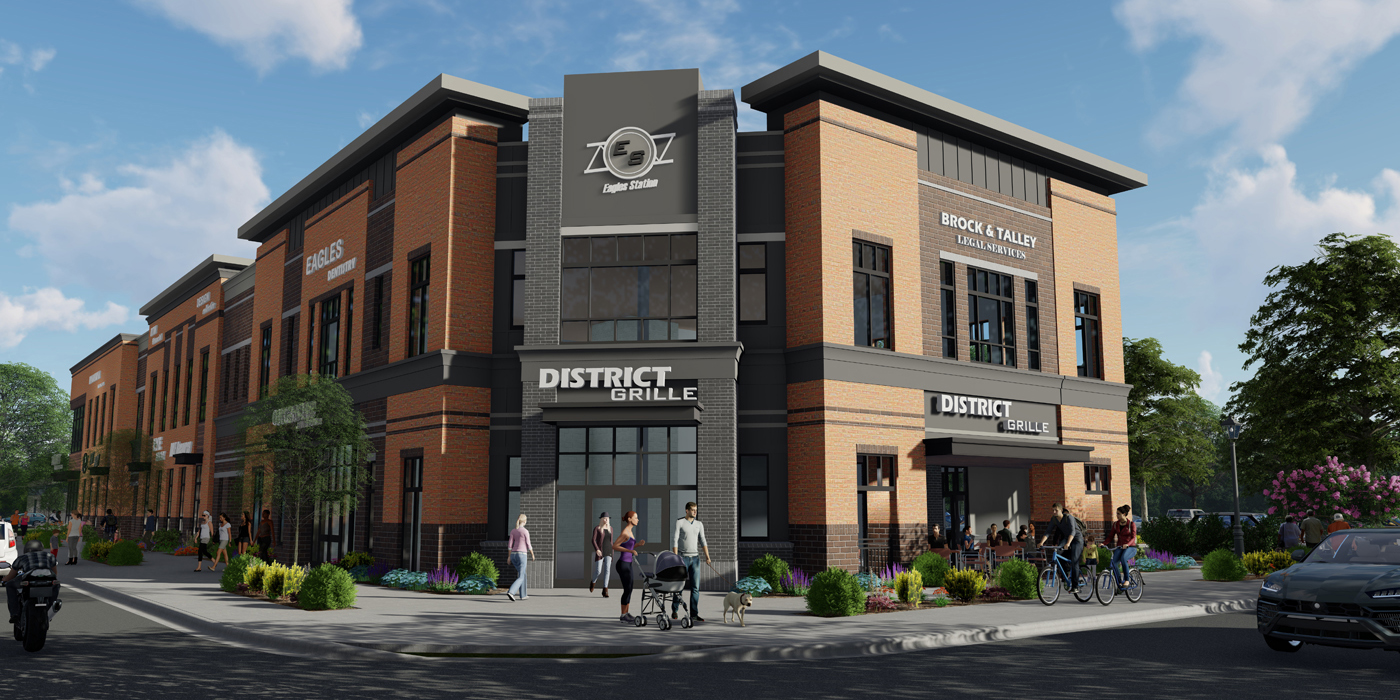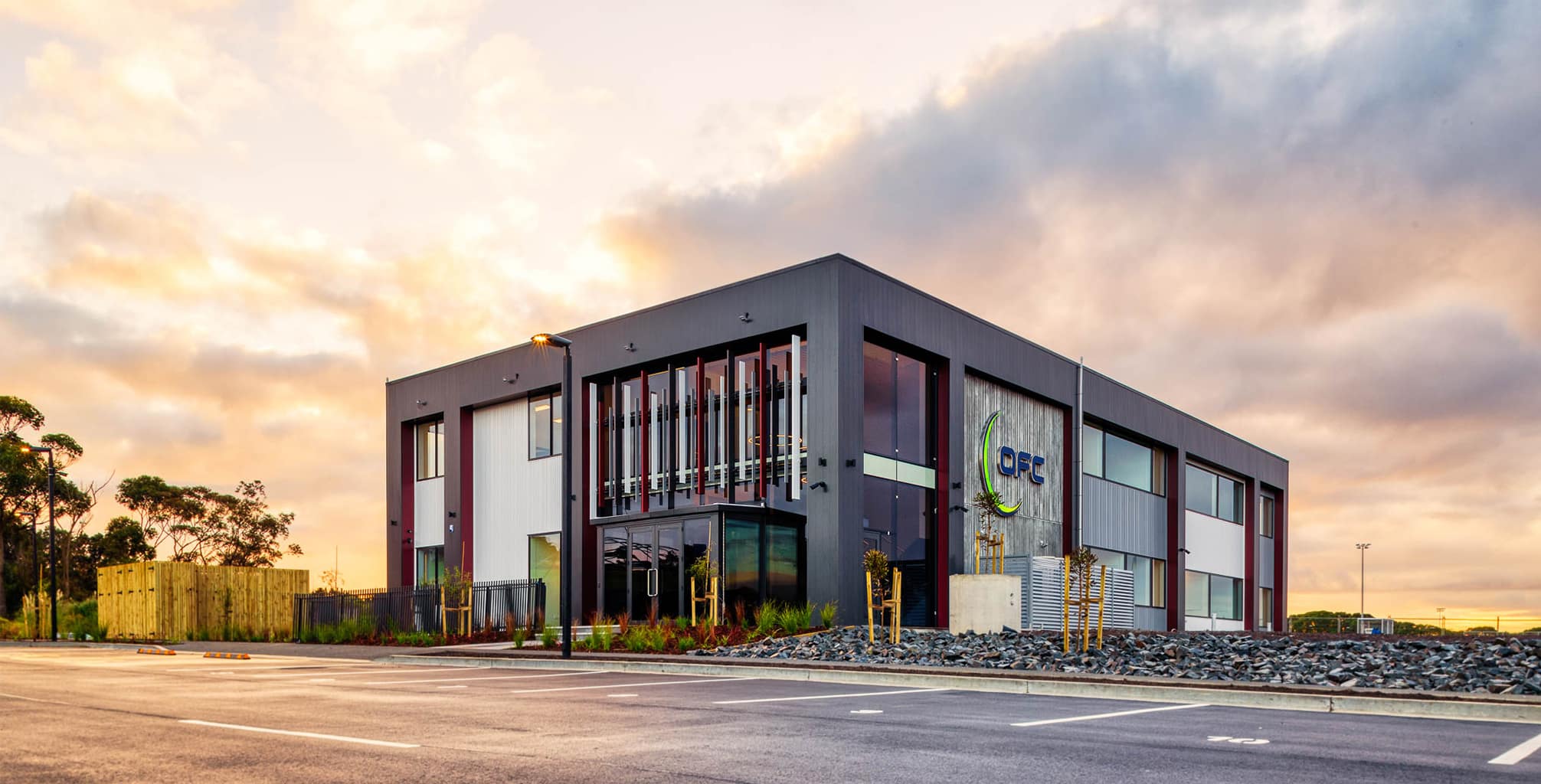Ways commercial architects Embed Eco-Conscious Strategies in Today’s Commercial Builds
Wiki Article
Introducing the Comprehensive Providers Offered by Commercial Architects for Modern Dope
Commercial Architects serve a critical function in contemporary development tasks. They mix layout aesthetic appeals with performance while adhering to regulative needs. Their knowledge expands beyond mere building, including lasting techniques and ingenious innovations. As they browse complex zoning legislations, Architects collaborate with various stakeholders to bring visions to life. This diverse technique questions regarding the evolving duty of Architects in forming contemporary rooms and the influence of their work on future developments.Recognizing the Function of Commercial Architects in Modern Advancement
In contemporary city landscapes, Commercial Architects play an essential role in forming useful and visual spaces that fulfill diverse service demands. Their expertise expands past plain design; they browse intricate zoning regulations, constructing codes, and environmental laws. By working together with customers, they identify certain needs, ensuring that each job aligns with the client's vision while additionally considering functional facets such as sustainability and cost-effectiveness. Commercial Architects are skilled at integrating ingenious technologies and products into their designs, improving both the performance and power efficiency of structures. They conduct thorough site analyses to analyze the prospective difficulties and chances provided by a place. Furthermore, efficient interaction with professionals and other stakeholders is important, making certain that the job progresses efficiently from conception to conclusion. Eventually, Commercial Architects are critical in developing rooms that not only meet functional purposes however likewise add to the general character and vibrancy of city environments.Idea Style: Transforming Ideas Into Reality
Idea design works as a crucial stage in Commercial architecture, where innovative layout options emerge from creative thinking. This procedure counts on collaborative ideation, bringing together diverse point of views to improve and improve preliminary ideas. As concepts take shape, they transform from abstract notions into substantial building truths.Ingenious Design Solutions
Transforming concepts right into truth is the trademark of innovative layout solutions in Commercial architecture. These remedies mix imagination with capability, addressing the special requirements of contemporary developments. By leveraging innovative modern technologies and lasting techniques, Architects craft spaces that are not just aesthetically attractive but additionally efficient and versatile. Focus on user experience drives the layout procedure, guaranteeing that environments foster performance and collaboration. Each project gain from a tailored approach, where ideas are carefully developed to mirror the client's vision while taking into consideration future trends. Ingenious layout services additionally focus on versatility, enabling alterations with time as business needs develop. Ultimately, these methods enhance the general worth of Commercial rooms, making them crucial in today's affordable landscape.
Collective Ideation Process
Collaboration works as the backbone of the ideation procedure in Commercial style, cultivating creative thinking and technology amongst varied stakeholders. Architects, customers, designers, and neighborhood participants participate in dynamic conversations, ensuring that all point of views are taken into consideration. This inclusive method enables the expedition of various layout principles, urging special services that straighten with the task's vision. With workshops and brainstorming sessions, ideas evolve and improve, transforming initial concepts into tangible layouts. Modern technology additionally plays a crucial duty, with tools such as Structure Information Modeling (BIM) promoting real-time collaboration and adjustments. Ultimately, this joint ideation process not just enhances the layout end result however also grows a sense of possession and investment amongst all parties included, resulting in successful Commercial developments.Zoning Evaluation: Browsing Laws and Compliance
As programmers commence on new projects, understanding zoning policies is vital to making sure compliance and preventing expensive delays. Zoning evaluation plays a vital function in this procedure, as it involves reviewing neighborhood zoning legislations that determine land use, building height, density, and obstacles. Commercial Architects have the competence to navigate these intricate policies, aiding clients identify permissible uses and any necessary variances.Lasting Layout Practices: Structure for the Future
Sustainable layout techniques are increasingly essential in the domain of Commercial design, especially as ecological concerns proceed to escalate. Architects prioritize green products, energy-efficient systems, and style strategies that reduce waste and environmental impact. Including renewable resource resources, such as photovoltaic panels and wind turbines, permits buildings to create their own power and decrease reliance on fossil fuels.Furthermore, lasting layout stresses the importance of interior environmental high quality. This consists of using natural light, boosting ventilation, and selecting safe products to improve owner health and performance. Environment-friendly roofs and living walls are likewise prominent functions that add to biodiversity and urban cooling.Additionally, Commercial Architects commonly integrate water conservation strategies, like rain harvesting and drought-resistant landscape design. Via these ingenious techniques, they produce areas that not only satisfy modern needs but likewise foster a lasting future, resolving the expanding demand for responsible advancement in the modern-day world.Job Monitoring: Ensuring Timely and Reliable Execution
Reliable job management is important for ensuring that Commercial architecture tasks are finished on schedule and within spending plan. This duty includes a variety of obligations, including the control of various stakeholders, timelines, and sources. Commercial Architects leverage their know-how to develop detailed job plans that outline essential milestones and deliverables, permitting for methodical progress tracking.Regular communication among team participants and customers is essential, fostering transparency and promoting prompt decision-making. Danger monitoring techniques are additionally utilized to determine potential challenges early, allowing aggressive remedies to be developed. By using sophisticated project administration tools, Architects can check job performance in real-time, making adjustments as required to keep performance.Interior Decoration: Creating Useful and Aesthetic Rooms
Interior decoration plays an important duty in enhancing both functionality and aesthetics within Commercial areas. Efficient his comment is here space preparation can optimize workflow and enhance user experience, while aesthetic style principles contribute to a visually attractive atmosphere - commercial architects. Together, these aspects produce areas that are not only functional yet likewise inspiringSpace Preparation Performance
While maximizing the utility of readily available space, Commercial Architects focus on area preparation effectiveness to create both practical and aesthetically pleasing settings. This strategy entails careful evaluation of the spatial design to assure perfect use every square foot. Architects consider elements such as operations, ease of access, and natural light to boost functionality. By tactically positioning furnishings, equipment, and workstations, they facilitate motion and interaction among users, advertising efficiency. Furthermore, zoning different areas for particular features assists in managing noise and personal privacy, producing an unified atmosphere. With effective room preparation, Commercial Architects can transform restrictions into possibilities, making sure that each area satisfies the diverse requirements of its passengers while sticking to regulative needs and market requirements.Visual Design Concepts
Aesthetic design principles play an essential duty fit environments that are not just functional however also aesthetically appealing. These principles lead Commercial Architects in creating areas that reverberate with customers while enhancing brand name identity. Key components consist of equilibrium, proportion, and consistency, which work together to develop a cohesive look. Color pattern and materials are carefully official website chosen to evoke desired emotions and support the overall theme. In addition, illumination plays a vital role, influencing mood and presence while highlighting architectural features. By integrating these concepts, Architects guarantee that areas are not just functional but likewise inviting and motivating. Eventually, reliable aesthetic style promotes a favorable individual experience, encouraging engagement and satisfaction in Commercial environments.Partnership With Stakeholders: Cultivating Effective Collaborations
Successful partnerships in Commercial design depend upon reliable cooperation with stakeholders, making sure that every voice is listened to and valued. This joint strategy involves engaging various events, including clients, service providers, and community members, throughout the design and development procedure. By promoting open interaction, Commercial Architects can deal with issues, collect insights, and align the project's vision with stakeholder expectations.The combination of varied viewpoints boosts imagination and technology, resulting in even more practical and cosmetically pleasing layouts. Routine meetings, feedback sessions, and workshops promote this dialogue, permitting Architects to adapt their plans in action to stakeholder input. Furthermore, establishing trust via openness and accountability reinforces these partnerships, leading to a smoother job execution.Ultimately, the success of modern advancements depends on the Architects' ability to browse and integrate differing interests, producing a joint atmosphere that advertises shared objectives and shared success.Often Asked Questions
How Do Commercial Architects Handle Budget Plan Constraints Throughout a Task?

What Kinds of Software Application Do Commercial Architects Frequently Make Use Of?
Commercial Architects typically make use of software program such as AutoCAD for preparing, Revit for Building Information Modeling, SketchUp for 3D modeling, and task administration tools like Microsoft Job to boost partnership and improve workflows throughout the style process.Can Commercial Architects Aid With Acquiring Financing for Projects?
Commercial Architects can assist in acquiring funding for projects by preparing in-depth proposals, helping to articulate style visions, and offering monetary estimates that can boost the chance of safeguarding essential funding from investors or banks.How Do Architects Ensure Security During the Construction Refine?
Architects guarantee safety throughout construction by executing extensive style standards, coordinating with designers, performing regular site examinations, sticking to local guidelines, and cultivating interaction amongst all stakeholders to alleviate risks and advertise a protected working setting.What Continuous Assistance Do Architects Provide After Job Conclusion?
After project completion, Architects supply ongoing see here now assistance via maintenance consultations, efficiency evaluations, and design adjustments. They assure buildings satisfy developing demands, address possible problems, and maintain compliance with guidelines, cultivating a long-lasting relationship with clients.Report this wiki page